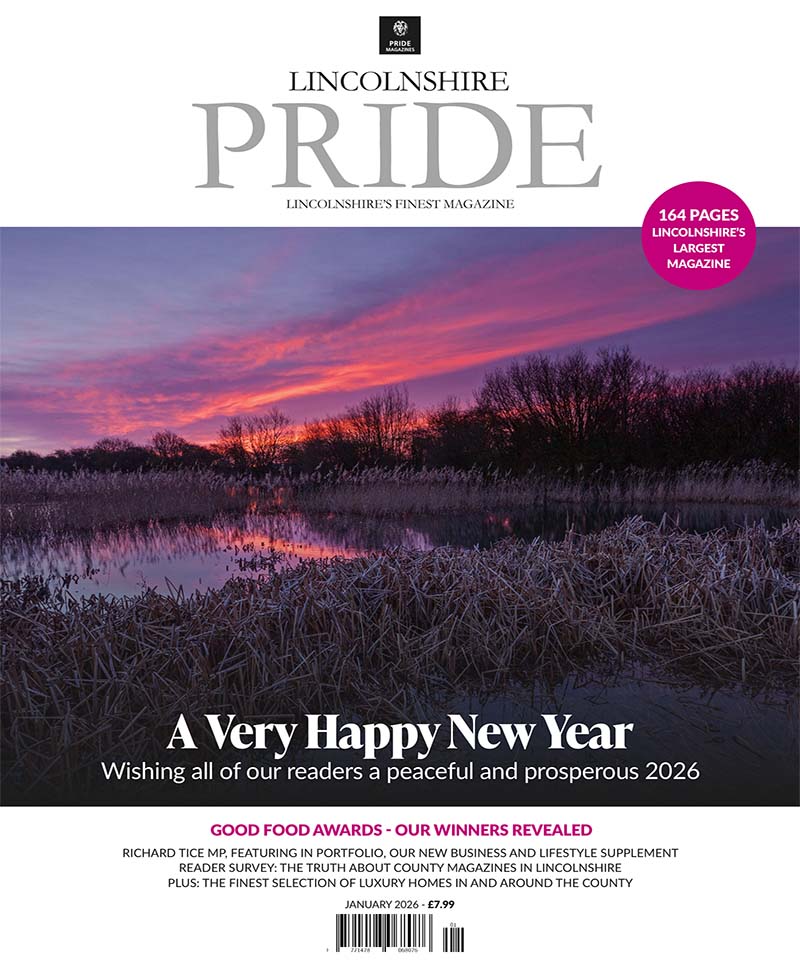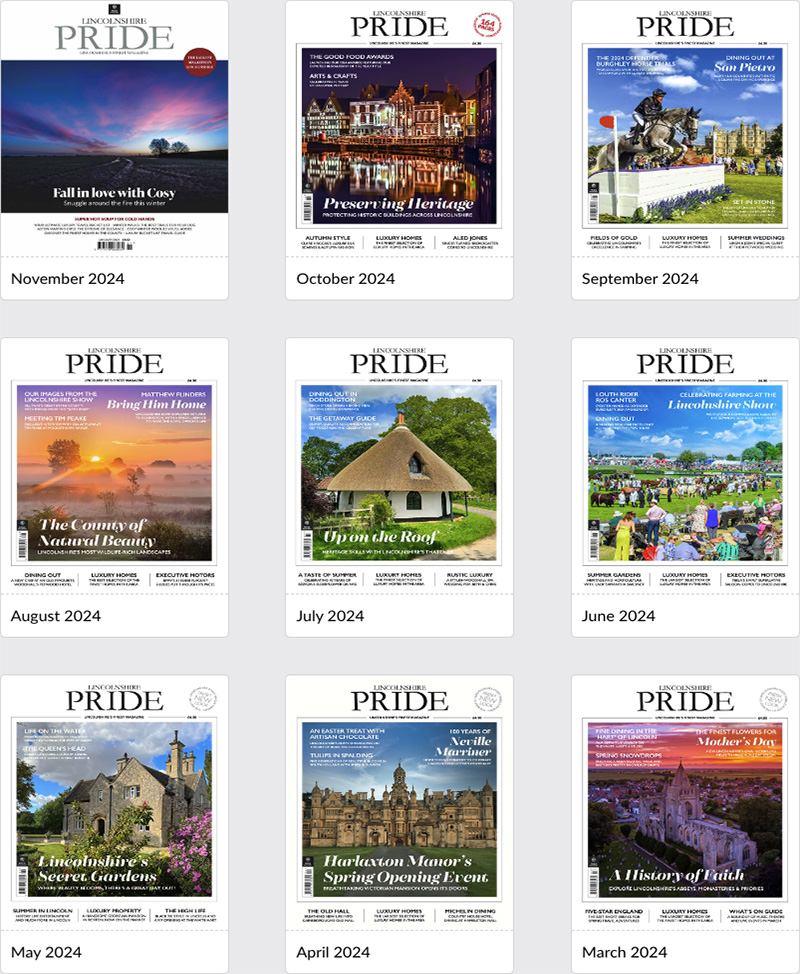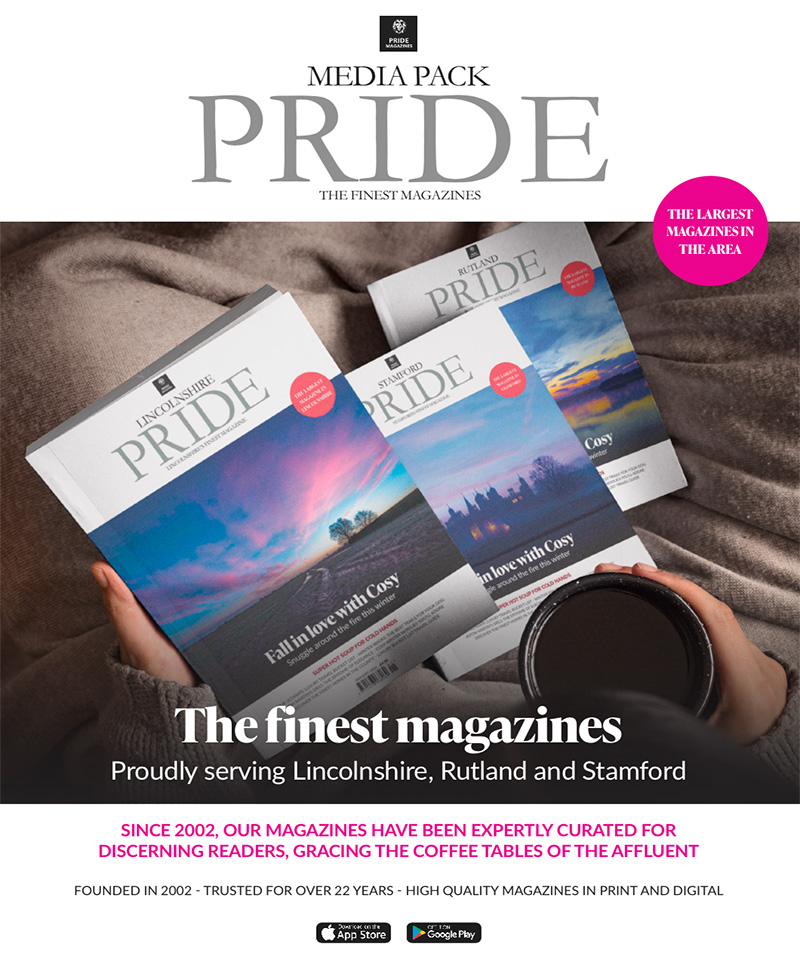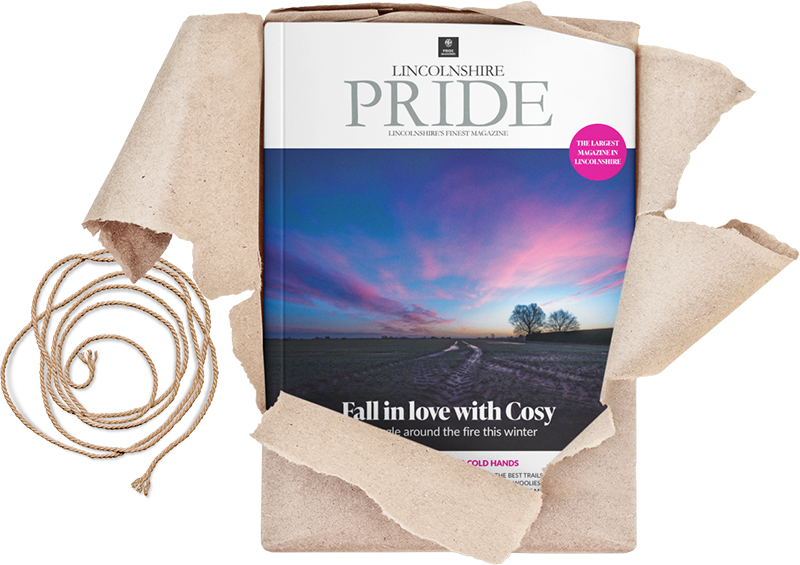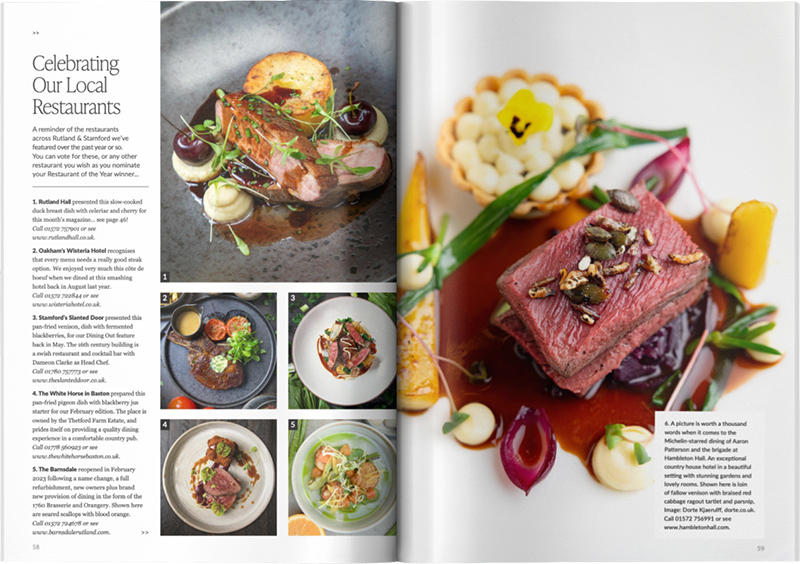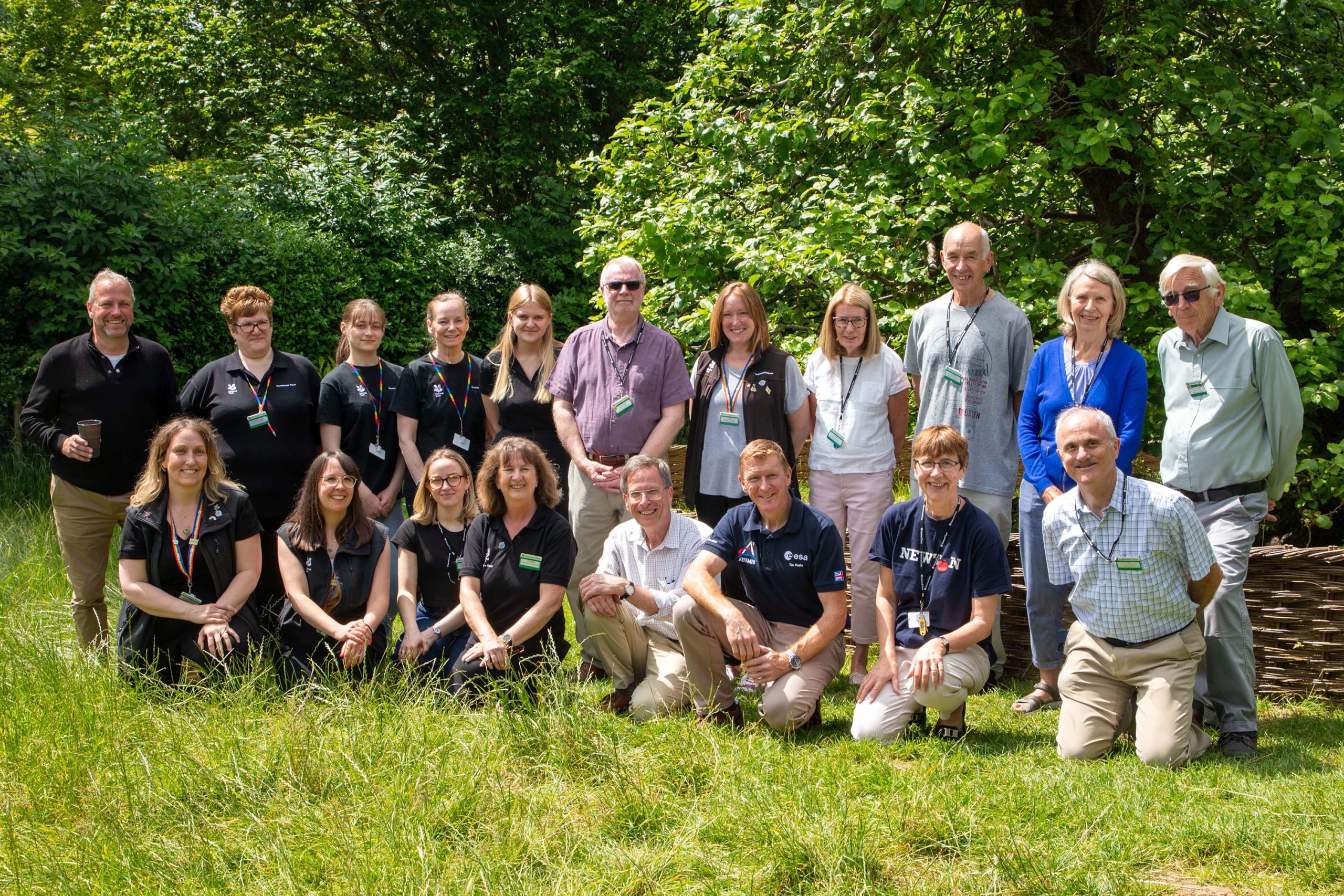
A Summer of Discovery with Tim Peake
Tim Peake, a special friend of Grantham’s Woolsthorpe Manor – the childhood home of polymath Sir Isaac Newton – recently helped to launch the National Trust’s Summer of Discovery. 70 adults and children joined the astronaut for a morning of space and science
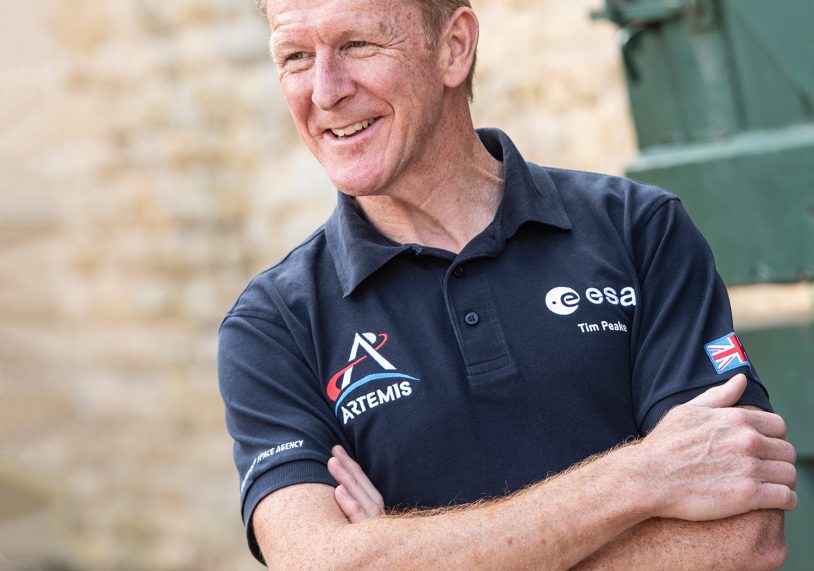
An out of the world experience recently, as an audience of 70 gathered at Woolsthorpe Manor near Grantham to spend a morning with Major Tim Peake, the British ESA astronaut, Army Air Corps officer and latterly space celebrity, author of eight books on the subject.
Tim was launching the National Trust’s Summer of Discovery programme which aims to use science and history to inspire families to find out more about the world’s greatest scientists… and they don’t come much greater than Woolsthorpe’s most famous resident, Sir Isaac Newton.
“I think this is my third or fourth visit,” said Tim during an exclusive interview with Lincolnshire Pride after the event. “It’s always such an inspiring place to come to, the childhood home of Sir Isaac Newton. And to meet with young people, as we have today, is great fun. Adults and children are broadly interested in the same aspects of space but everyone gets inspired by the subject.”
“The last time I visited Woolsthorpe Manor was to plant an apple tree sapling that had been cultivated from a space-flown seed from the tree within the grounds here, so that was very special.”
The morning began with a talk in which Tim described first hand the experience of going into space, and living on board the ISS from December 2015 to June 2016. During his time, he received messages of support from HM Queen Elizabeth II and Elton John. Tim also ran the London Marathon from space on the ISS treadmill, and he broadcast a New Year’s Eve message from space… first though, he had to actually get there.
“One of the things you expect when you’re in orbit is how peaceful it is. The space station does have thrusters – it needs them for if it has to move, but that’s only on rare occasions. Most of the time the station is obeying Newton’s laws and remaining peacefully in orbit, so there’s no noise coming from any engine and no vibrations.”
“But to get there it’s not so peaceful. You have to strap yourself into a Soyuz rocket. It takes three people, but you’re crammed in, so its very claustrophobic when the hatch is shut on top of you. And if everything goes to plan with our checks, there’s about 40 minutes of time built-in as a buffer so you’ve that time to just sit there and wait, on top of about 300 tonnes of explosive rocket fuel.”
“A thousand things can happen at that moment, but only one of them is good. But when the rocket does finally launch, it’s like the world’s best roller coaster. It has nine million horsepower, it accelerates at the same pace as a Formula One car, and that gives you about 4g of acceleration for several minutes with nothing to do but focus on your breathing, as we had to during training to build up our tolerance.”
“On the way up, the protective fairings disappear and you can see out of the windows for the first time, as the blackness of space approaches. That lasts for about four minutes and then you’re in space, having gone from being vertical to a horizontal orientation, in orbit, cheating orbit to exactly match the curvature of the Earth.”
“That means you’re travelling about 17,500mph, which is ten times the speed of a bullet, 25 times the speed of sound. When the engine finally cuts out, everything becomes very beautiful and that’s when we float up and experience weightlessness for the first time.”
Tim went on to explain how he ‘didn’t do particularly well’ at school and but felt inspired and determined watching the Space Shuttle-era of space flight and seeing people like Helen Sharman, the first British woman in space.
Joining the Army as a military pilot, Tim discovered he loved the feeling of flying, and became determined to specialise in becoming not only a pilot, but a test pilot too, across a number of aircraft including the Apache helicopter in which he spent over a decade. Tim joined the ESA in 2008 after seeing an advert online, ‘astronauts wanted.’
“8,500 people were applying too,” says Tim. “But just recently I was on the other side of the table, selecting candidates, and this time there were over 22,500 so it’s amazing to see how much interest a career in space has increased.”
“The first day of testing is all about hard skills but then for the rest of the year during the selection process it’s about soft skills. That’s what space agencies are most concerned about; your personality, your character, leadership, teamwork and your communication skills. So whenever I go around to talk at schools and colleges, I really to try to impart how important it is to have a balance of both.”
Resilience, too, is an important quality. Tim recalls the hours he spent in the simulators and constantly being told ‘you’re dead, you’ve died, you’re dying again…’ but then, he says, gradually you stop dying and stop failing even when instructors are throwing different scenarios and problems at you and other trainees.
“Crammed together as an international crew, you need to get on well with each other. We’re put under stress and pressure as we train. They make us hungry and tired and grumpy, in environments from caves underground to underwater habitats.”
“The ISS is home for six months and I think it’s the greatest ever feat of human engineering, 400 tonnes of hardware, the size of a football pitch, over our head right now, 400km up there, going around the planet 16 times a day. The most humbling experience, though is
the thin – very, very thin – 16km of atmosphere, which is all that’s protecting every single living thing on Earth. Without it, we’re no different from Mars or from Venus. Suddenly you become aware that we have to look after that thin strip of gas and treasure it.”
“Sometimes people question why we’re investing the time and finance in exploring space. It’s because it holds the answer to so many problems that we face down here today. Lots of solutions that we find will be found in space. In an environment without gravity we’re able to grow very large, very pure protein crystals which aids in the search for a treatment for conditions like Parkinson’s and motor-neurone disease. In space we’re also using 3D printer with bio-ink to ‘print out’ organs like the heart or cartilage, so this is the potential future for medicine. You can do that in space, without gravity, but not down here on earth, so we’re doing some amazing science up there.”
“The modern commercialisation of space and making it more sustainable, establishing geopolitical precedents is where we are now. We’re no longer in the era of Apollo or Saturn, so a rocket that’s just 1% reusable is no good. We’re now ensuring we’ve rockets that are 90% reusable.”
“The Summer of Discovery is about inspiring young people to think about space as a career, about science and about technology and engineering. Getting young people out of the classroom and allowing them to put science into practice whilst having fun along the way is really important.”
“It’s a way of inspiring curiosity and creativity in young people with interactive experiments inspired by Newton himself, from interactive experiments which will include a pendulum, a telescope, Newton’s cradles, a tower drop and air-powered rocket toys, all on top of Woolsthorpe Manor’s existing Science Centre activities. All of these are aimed at celebrating the work and life of Sir Isaac Newton and the fact that his life in science began not when he was a grey-haired old man, but when he was a curious young boy.”
Woolsthorpe Manor’s Summer of Discovery, will be running from 12th July until September at the National Trust’s Woolsthorpe Manor near Grantham, see www.nationaltrust.org.uk.


